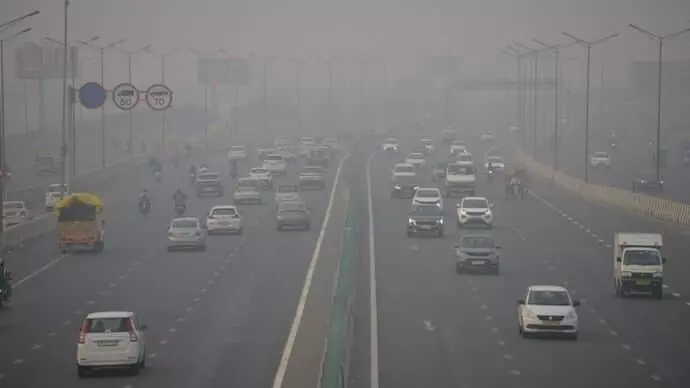Toxic air in Delhi: Residents turn to preventive measures
The average air quality, ranging between 450 to 500, considered severe, is affecting the health of people
By Neelambaran A
Toxic air in Delhi: Residents turn to preventive measures
Hyderabad: The air quality in New Delhi continues to remain toxic, affecting lakhs of people residing in the national capital region. A survey by Local Circles has revealed that every family surveyed had one or more individuals experiencing pollution-related health ailments.
The survey has revealed that 23 per cent of the participants, mostly those from the poor sections, are not doing anything to protect themselves from the poisonous air.
The average air quality, ranging between 450 to 500, considered severe, is affecting the health of people across different age groups, particularly children, older people and those with chronic breathing problems.
Graded Response Actions Plan
The poor air quality can result in immediate and long-term health concerns including possibilities of asthma, pneumonia and lung cancer. Considering the toxicity in the air quality, the government of NCR of Delhi has enforced the Graded Response Actions Plan (GRAP) (stage 4) from November 18.
The continuing threat to health
The continuous degradation in air quality is leading to several respiratory issues among the common people.
Dr Sachet Dawar, faculty of Medical Respiratory of Noida International Institute of Medical Sciences College and Hospital (NIIMS), said, “The pollution in Delhi has been a serious concern for years, leading to various health concerns like respiratory issues, itchy eyes, rhinitis, sinusitis and breathing issues. The residents are on the verge of health risks posed by air pollution as they are increasingly exposed to the harmful air.”
From mild discomfort like headaches, nasal congestion, sore throat and cough, poor air quality can also lead to skin problems. Long-term exposure to polluted air can result in chronic respiratory diseases like chronic obstructive pulmonary disease (COPD) and even lung cancer.
Measures to curb outdoor pollution
The challenge remains in controlling outdoor pollution, with the efforts of the government including limiting the use of vehicles, online classes for schools, restricting construction works and ordering government offices to operate at 50 per cent capacity among other measures.
The presence of fine particulate matter is reported to have been linked to heart attacks, strokes and heart failure, as well as hypertension, further escalating the health risks.
Steps to reduce indoor pollution
With the measures of curbing outdoor pollution proving to be less successful, experts are recommending measures to reduce indoor pollution.
“Residents can reduce indoor pollution sources to ensure a healthy environment indoors. Common indoor activities like smoking tobacco, burning candles and cooking with open flames release harmful chemicals in the air, impacting the overall air quality inside the house. It is essential to limit these sources and include healthy alternatives like electric cooking appliances and low-odour, organic cleaning products,” Dr Sachet Dawar said.
Increase in usage of air purifiers
The survey by the Local Circles has also revealed that the deployment of air purifiers has increased from 18 per cent to 27 per cent within a time span of one month between October and November.
How are the poor coping with air pollution?
People with a better economic status are resorting to technological aids like air purifiers, staying indoors, and working from home to stay safe from the polluted air. A larger section of the population, living without proper houses and relying on daily income to meet their needs is continuing to suffer.